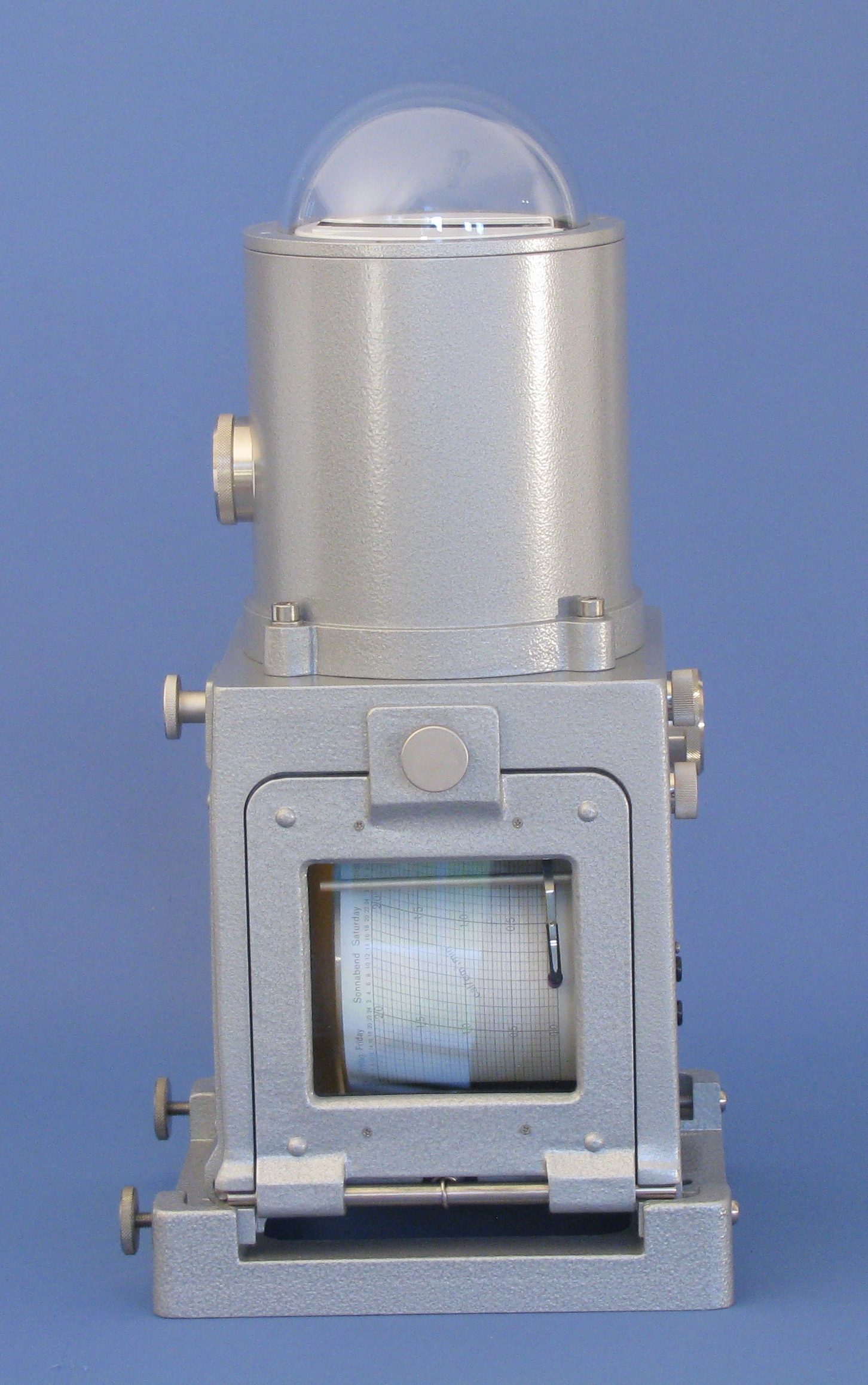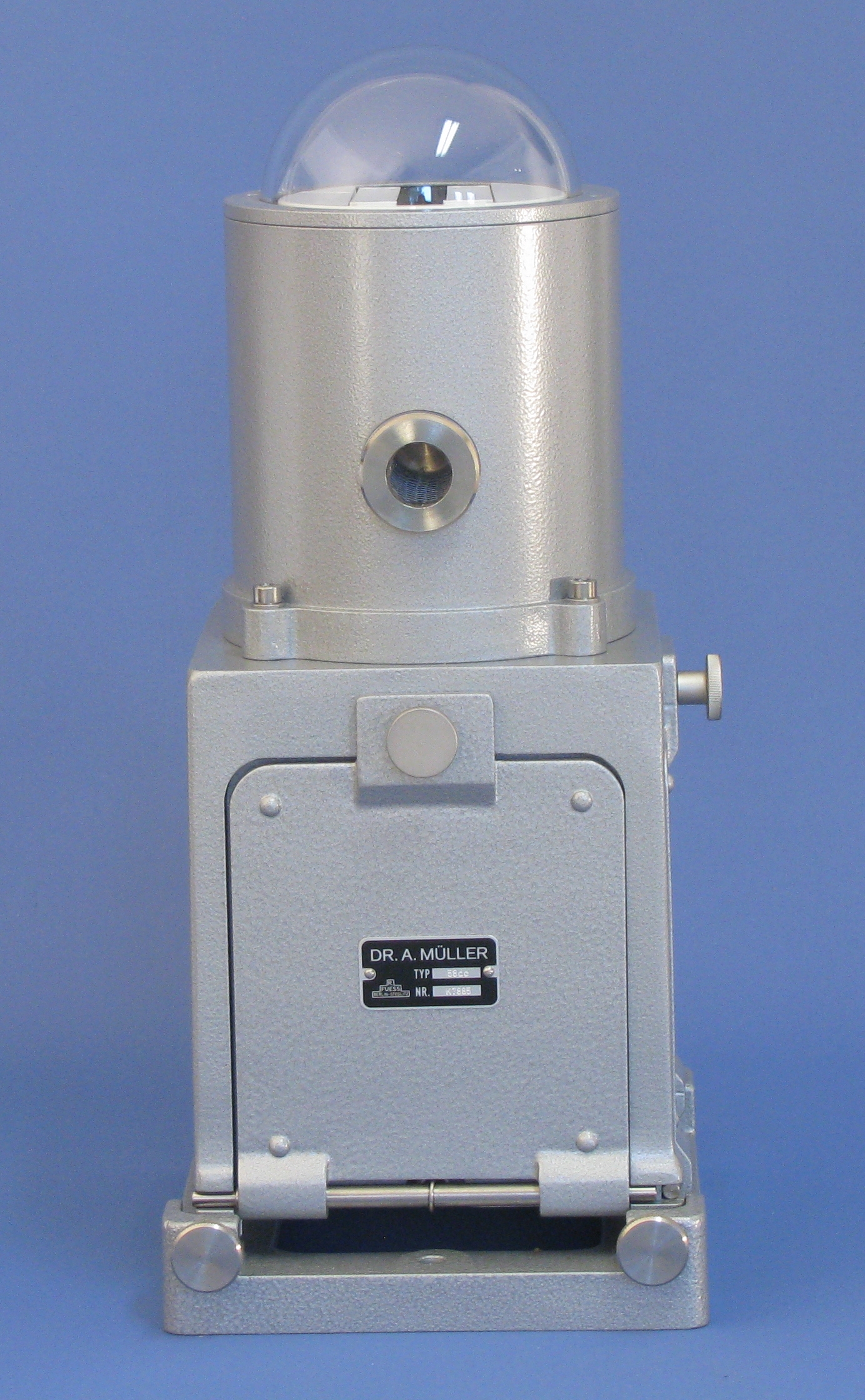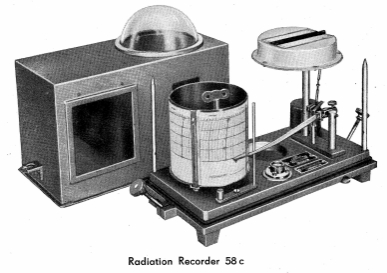
Druckschrift: 251-2 Bimetall-Aktinograph (Nr. 58dc)
leaflet: 251-2E Bimetallic Actinograph, Robitzsch-Fuess No. 58dc
leaflet: 251-0E Robitzsch Type Radiation Recorder - Aktinograph No. 58c
*derzeit nur in englisch verfügbar
Nr. 58dc Bimetall-Aktinograph n. Robitzsch-Fuess 
in grau hammerschlag lackiertem, wetterfesten Leichmetall-Gußgehäuse mit halbkugelförmiger Glas-Schutzglocke, eingebautem Bimetall-Messsystem mit Registriervorrichtung zur Aufzeichnung der Strahlungsintensität als Summe der Sonnen- und Himmelsstrahlung, mit Vibrator und Dosenlibelle. Messbereich:
Messbereich:
0...2 cal/cm²min
Diagrammteilung:
0,05 cal/cm²min
Trommelumlaufzeit (nach Wahl):
a) Tagesumlauf
b) Wochenumlauf
Schreubtrommel:
Ø 93,3 mm
Höhe: 93 mm
Schreibhöhe: 65 mm
Gangdauer: ca. 9 Tage
Schreibhöhe 65 mm
Abmessungen: 180 x 200 x 400 mm
Gewicht: 6,2 kg
Zubehör:
1 Satz Schreibstreifen
(100 Blatt für Tagesumlauf oder Wochenumlauf)
1 Faserschreibfeder
1 Flasche Silicagel
1 Netzteil
No. 58c Robitzsch Type Radiation Recorder - Actinograph
*Beschreibung derzeit nur in englisch verfügbar
The Robitzsch Type Radiation Recorder measures the total of direct solar and diffuse celestial radiation reduced to a horizontal plane. The measuring accuracy of about ± 5 % is sufficient for all fields of application. Attendance of the recorder is easy for untrained persons, too.
The measuring system consists of three symmetrically arranged bimetallic strips, a black one in the middle between two whitened strips. Due to differential absorbtion a temperature difference is created between the strips which serves as a measure of radiation intensity. The position of the recording pen depends only on the temperature difference of the strips and is not influenced by the actual temperature level.
The sensitivity range comprises the entire spectrum of solar an celestrial radiation; only the longwave range > 2 μ is not included, this, however, contributes only very little to the total energy. The total radiation during measuring time in cal-2 is obtained by integrating the radiation curve. The radiation recorder in its present form has been considarably improved as compared with former models. These improvements are:
a) Greater measuring accuracy and independence of disturbing effects by the elimination of scattered radiation
(Protective cap after Götz and Casparis).
b) Direct recording of radiation intensity in cal cm-2 min-1.
c) Device for conveniently applying time marks.
d) Set-to-zero without affecting the adjustment of the instrument.
e) Reduction of bearing friction by build in virbator.
Measuring range: 0 ... 2.0 cal/cm²/min
Diagram divisioned in: 0.1 cal/cm²/min
Recording-drum:
Ø 93,3 mm
93 mm height
writing width: 50 mm
time of running: app. 9 days
time of drum rotation: 1 day / 1 week, (according to choice)
1 set of recording charts (100 charts for daily or weekly rotation)
1 fiber-pen
1 bottle of silica gel
Dr. Alfred Müller - Meteorologische Instrumente KG
Chausseestraße 39 / 42c, D-15712 Königs Wusterhausen
Telefon: +49 (0)3375 9025-32 Telefax.: +49 (0)3375 9025-36
e-Mail: info@meteomueller.de